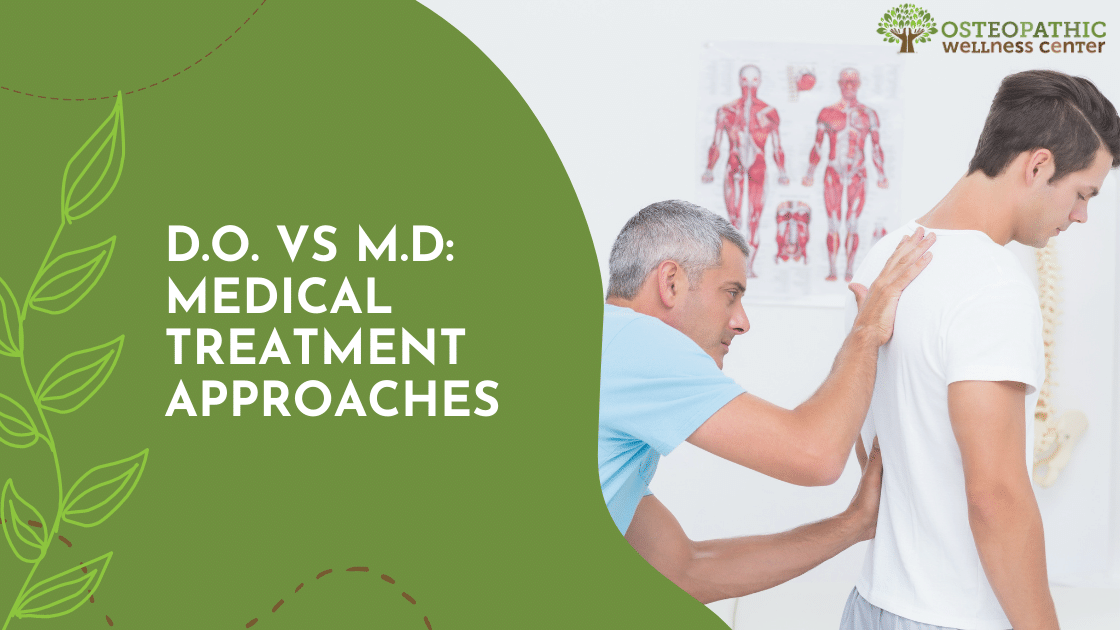Dr. David Johnston is a D.O. in Ridgefield, Connecticut. He sometimes gets asked to explain the difference between a D.O. and an M.D. Most physicians in the U.S. are either doctors of medicine (M.D.) or doctors of osteopathy (D.O.), and are licensed in all 50 states.
Allopathic vs. Osteopathic Medical School
About one of every five medical students in the US is in an osteopathic program. Although many of the courses that MDs and DOs take in medical school – like anatomy, physiology and pharmacology – are the same, the approach is different. Traditional medical students are taught to identify the symptoms and disease, and prescribe to treat those specific issues (the allopathic approach). The DO curriculum emphasizes holistic patient management and teaches specific strategies to ensure the focus remains broad, rather than narrowing in on a single symptom or disease.
A second major difference between DOs and MDs is that DOs focus on the musculoskeletal system. DOs spend 200 additional hours in medical school learning spinal manipulation. They are taught that structure affects function – if the spine is out of alignment it can cause symptoms elsewhere in the body.
History of Osteopathic Medicine
Osteopathy was founded in the late 1800s by physician and surgeon Andrew Taylor Still, MD, DO in Kirksville, Missouri, when he discovered the significance of living anatomy in health and disease. Dr. Still realized that in order to achieve the highest possible form of health, all parts of the body should work together harmoniously. He reasoned that disease could have its origins in slight anatomical deviation from normal. He then proved he could restore health by treating the body with his hands, naming his innovative approach Osteopathy.
Dr. Still understood that the human body is composed of many parts, all intimately related as a functioning whole. More than a hundred years ago, he also realized that the human being is more than just a physical body. He envisioned a totally new medical system that acknowledges the relationships of the body, mind, emotions and spirit.
In 1892 Dr. Still founded the first school of Osteopathy in Kirksville, Missouri, and today there are 38 colleges of osteopathic medicine in the U.S. and over 135,000 practicing DO’s in 2021 – an 80% increase over the last decade.
Although DOs use prescription medications, surgery and diagnostic technology, this is typically not their first “go-to”. More often, DOs use alternative treatments such as herbs or recommend complementary or alternative therapies such as massage, acupuncture or homeopathy. Traditional osteopaths will also use hands-on osteopathic manipulation 100% of the time with their patients. At the Osteopathic Wellness Center in Ridgefield, Dr. David Johnston strives to help his patients achieve a high level of wellness; emphasizing health promotion and disease prevention.
Click here to contact us and learn more!
“To find health should be the object of the doctor. Anyone can find disease.”
-A.T. Still, M.D., D.O., founder of Osteopathic Medicine
FAQs
What is the difference between a D.O. and an M.D.?
The main difference between a D.O. (Doctor of Osteopathy) and an M.D. (Doctor of Medicine) lies in their approach to patient care. While both D.O.s and M.D.s are licensed physicians and complete similar medical coursework, D.O.s receive additional training in osteopathic principles and techniques. D.O.s emphasize a holistic approach to patient management, focusing on the interconnectedness of the body’s systems and the relationship between structure and function. This includes a special emphasis on the musculoskeletal system. In contrast, M.D.s typically follow the allopathic approach, which focuses on treating specific symptoms and diseases. Both D.O.s and M.D.s can prescribe medications, perform surgery, and utilize diagnostic technology, but D.O.s may also incorporate alternative treatments and hands-on osteopathic manipulation into their practice.
What is the history of osteopathic medicine?
Osteopathic medicine was founded by Dr. Andrew Taylor Still in the late 1800s in Kirksville, Missouri. Dr. Still recognized the importance of the body’s living anatomy and the harmony needed among its various parts for optimal health. He developed the concept of osteopathy, which focused on treating the body as a whole, considering the relationships between the body, mind, emotions, and spirit. In 1892, Dr. Still established the first school of osteopathy in Kirksville. Today, there are 38 colleges of osteopathic medicine in the United States and over 135,000 practicing D.O.s. Osteopathic medicine combines traditional medical approaches with alternative treatments and emphasizes health promotion and disease prevention.
What treatments do D.O.s use?
D.O.s are trained in both traditional medical treatments and alternative therapies. While they can use prescription medications, surgery, and diagnostic technology, D.O.s often take a more holistic and integrative approach to patient care. They may incorporate alternative treatments such as herbal remedies, massage, acupuncture, or homeopathy into their practice. D.O.s also have specialized training in osteopathic manipulation, which involves hands-on techniques to diagnose and treat musculoskeletal issues. Osteopathic manipulation aims to restore balance and function to the body, alleviating symptoms and promoting overall wellness. At the Osteopathic Wellness Center in Ridgefield, Dr. David Johnston focuses on helping patients achieve a high level of wellness through a comprehensive approach that includes osteopathic manipulation, health promotion, and disease prevention.

